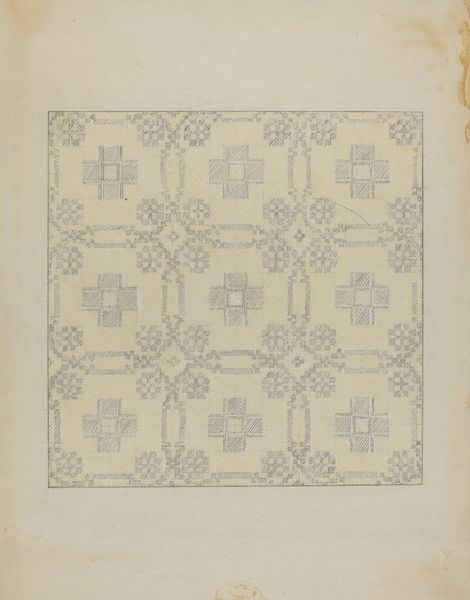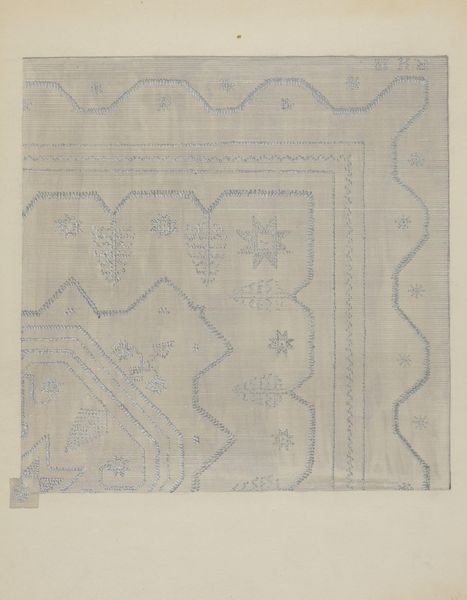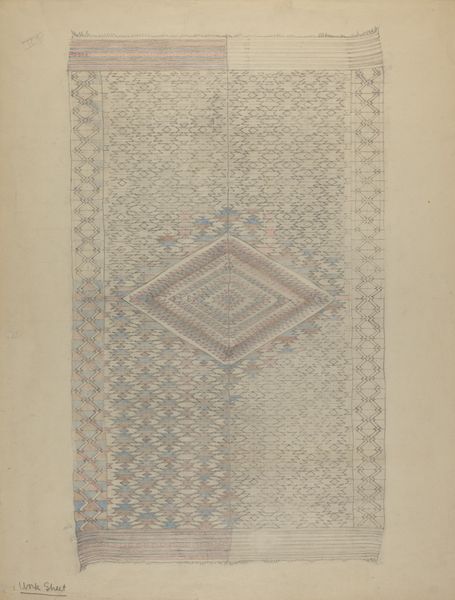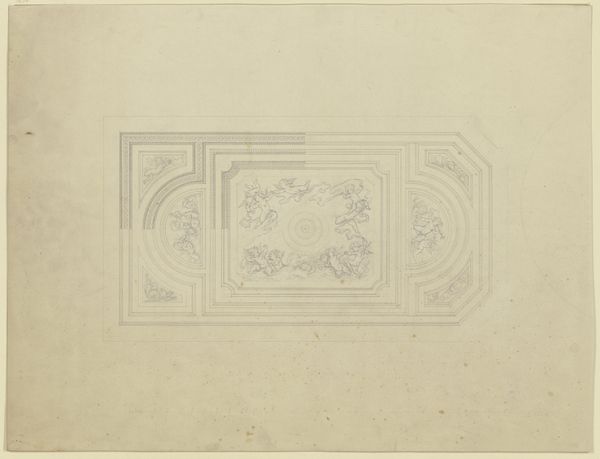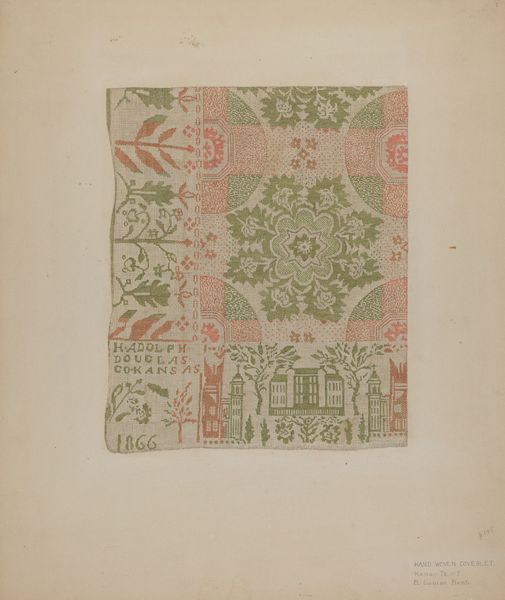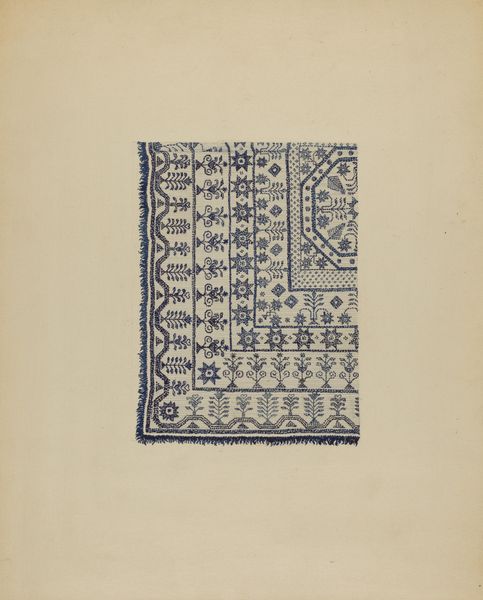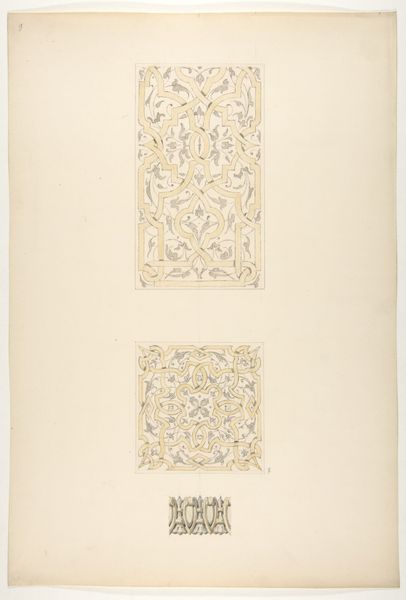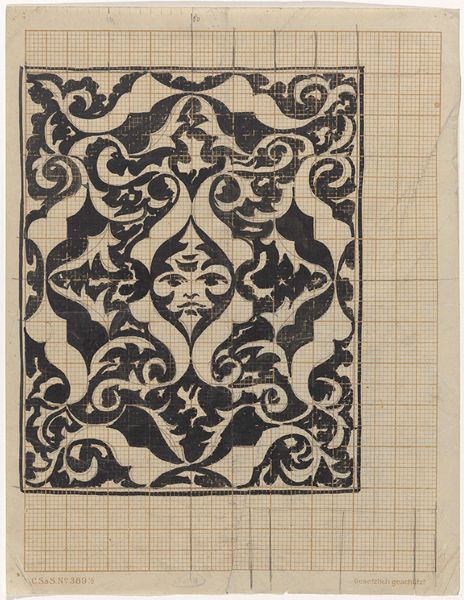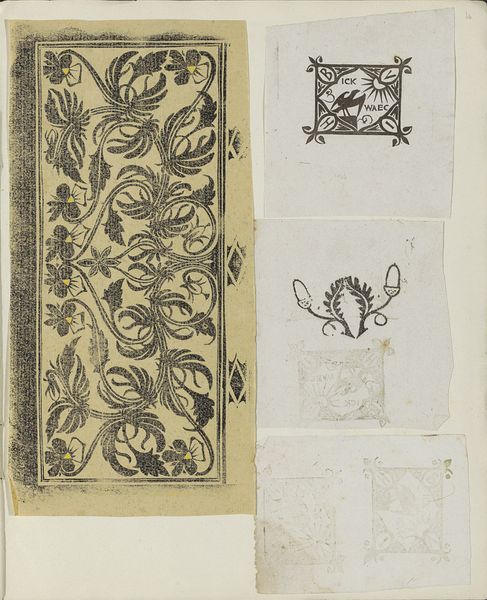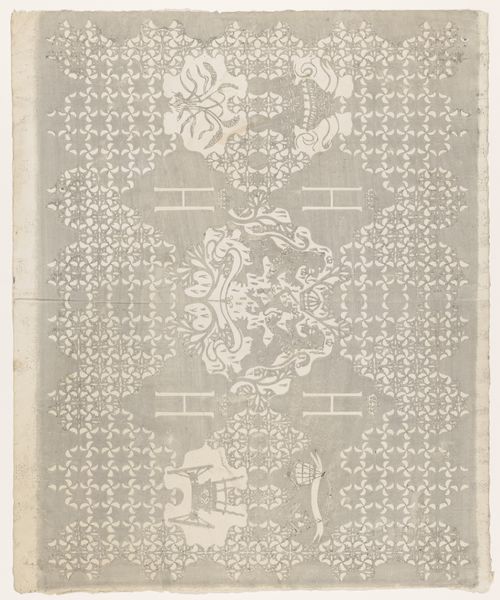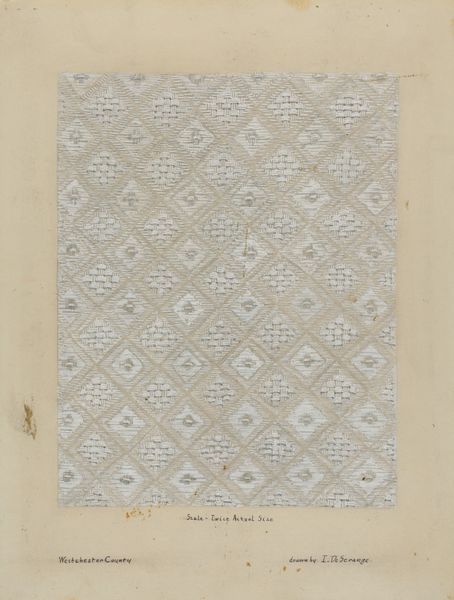
drawing, paper
#
drawing
#
paper
#
geometric
#
line
#
decorative-art
Dimensions: overall: 63.4 x 50.8 cm (24 15/16 x 20 in.) Original IAD Object: 96" long; 93" wide
Copyright: National Gallery of Art: CC0 1.0
Curator: What immediately strikes me about this work, simply titled "Quilt," is its overwhelming sense of calm, like a gentle hush has fallen over the pattern itself. Editor: And indeed, it is calming. What we’re looking at is a drawing on paper, thought to have been created between 1935 and 1942 by Gene Luedke. The artist presents a potential quilt design, marked by floral and geometric shapes. Given the suggested timeline, what historical context do you think may have influenced the imagery? Curator: The Great Depression casts a long shadow. Quilts were often made from scraps during that time, offering both warmth and a tangible act of resilience. I wonder if Luedke's drawing suggests not only a practical solution, but also the beauty and artistry found in such necessity. What does it tell us about tradition? Editor: It’s hard to ignore the symbolism in that context. Quilts are, by their nature, assembled from fragments, like memories stitched together. The floral motifs, too, hint at domesticity and perhaps a longing for beauty amidst hardship. In the middle section we see botanicals in an urn, which speaks to more structured, hierarchical symbolism. Curator: Yes, the rendering style reinforces that connection. The careful line work gives it an almost academic feel, reminiscent of botanical studies, though employed here in what feels like a wholly "feminine" craft. It feels like Luedke consciously straddles those two worlds. Was the aim utility, beauty or commentary? Editor: Or a synthesis of them all, perhaps? It feels almost like a visual score, laying out patterns with layers of significance embedded in an overall experience. But what cultural references can we unlock? Curator: It does invite decoding. Given the period, it makes me think about identity. For instance, who was Luedke, and what access would they have had to art historical depictions? Considering gender and class during that era opens a multitude of possible readings about access and artistry. What’s visible and what is hidden by its very form? Editor: Exactly. The piece functions as a kind of symbolic landscape—revealing historical connections even while evoking our own, deeply personal reactions. Curator: So while it whispers of peace, it invites some piercing questions about who it represents, and for whom. Editor: Right, and maybe the quietness itself gives us a space to begin to listen.
Comments
No comments
Be the first to comment and join the conversation on the ultimate creative platform.
